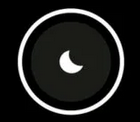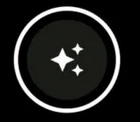friday night
i was super lucky to see the aurora both friday and saturday nights .
on friday night around 11pm i learned there was an aurora event from my roommate. i spent another hour finding someone to go with and then prepping (warm things). i originally planned to drive just to nahant (25 mins) since the previous night i only slept 3 hrs and i hadn’t napped that much either. (yay for 7:30am construction directly outside my window!). but i ended up driving all the way to rockport, which is the closest relatively dark place. this time i found an actual place to park (davis park) instead of a dark graveyard place.
once there we saw another person with their trunk open and a tripod out. and also a lot of people there already. and immediately we could see the aurora in the sky — it went across the entire sky. it was cool to see a sky phenomena that stretches across the entire sky. normally, stuff like the ISS or comets are just thin streaks, or even the stars or milky way. but the aurora stretched across the entire sky.
it wasn’t cool like the pictures — really just a muted green, where the sky was lit up more like dusk than the rest of the sky which was fully dark. it was bright enough to block out the stars behind it. as it faded over the hour or so we were there, the stars behind it started to peak out.
however if you took photos the aurora looked amazing.
below is a still from a video:

and the pixel phone you could actually enable astrophotography mode (enabled by default) and it would condense 4 minutes of frames down into a one-second video. basically, you have to set the phone down in “night sight” mode.
“When in astrophotography mode, Pixel phones will take 16 16-second photos when the shutter is pressed, then merge all of them together – essentially automating the work that Greszko used to do by hand.” [link]
the button changes from a moon to stars if you stop moving the phone (holding it isn’t good enough–have to actually set it down) and wait a few seconds for it to focus.


this is super compressed — some time i’ll figure out a link to the full res — so it actually looks better than this (more distinct stripes that are wavering rather than a blur).
i took all these photos without a tripod, just lying the phone on the ground or propping against a bag — i am ordering a selfie stick-tripod combo asap haha.
i was so tired on the way back i ended up napping at a charging station… i probably got back around 5:30am.
saturday
on saturday night we left at close to 11, got there ~45 mins later. was worried that clouds would come in (which there were some) and that there would not be an aurora at all. when we got there i was immediately disappointed — I didn’t see anything at all. I spent a while constantly refreshing the spaceweather website and reading up on auroras and what all the numbers meant. another friend said the peak was shifting to 5am, and planned to get up at 3am and drive two hours to maine. eventually we went to the car to warm up a bit (yay EVs, they can just heat up w/o running the engine). after a while my friend lily said “was the sky that bright before?” and i stare at it a bit too, then notice that the bright section included a stripe going upward.
after that we all tumbled out of the car to go witness the aurora. it was much smaller / dimmer than the previous night but still glorious. in a different way — specifically, it was great to share the moment with my friends and partner — and also there was a separate phenomena going on.
perhaps because of the dimness of the aurora and the underlying clouds. but it was like long lines of light racing up the sky, one after another. impossible to capture on camera since they moved so fast, unlike the aurora.
it was very cool and also a little terrifying. as if some giant creature were searching around in a dark closet with a flashlight, and we were this tiny forgotten snowglobe in the corner. i was really glad i was there with other people. unlike the previous night there were very few people there.

they were visible a bit after the aurora showed up, and stayed around long after aurora faded. so for half an hour at least.
i searched online later and never did find anything similar described online. there are pulsating auroras but those are really different. i think it wouldn’t count as an aurora at all. i’m not sure who to ask.
eventually we got tired of looking and decided to go home, since it was quite late.
i’m pretty glad i didn’t convince my friends to stay up late with me for nothing. but i do feel really bad about convincing my parents in georgia to drive up to a dark place and look for the aurora. NASA seemed convince there might be another event. i’m also sad that since i had a pixel phone and not a samsung phone, i could not help my parents do timelapses.
still, apparently the solar activity comes in 11 year cycles so there is hope for seeing a big storm again this year. and i don’t feel too bad in some sense that it was just one night, and that my parents will likely be able to plan a trip somewhere to see the aurora up close.
i also need to subscribe to npr. after google podcasts got dismantled (T^T) i stopped having a reliable podcast aggregator, and thus stopped listening to podcasts i used to regularly see. shortwave would have told me there was a big aurora event !
main realizations:
- the NASA map is just where the aurora is directly overhead. the aurora itself could still be seen for 600 miles+ distant. i wish i’d known that — if so i would’ve let my parents know.
- I hadn’t figured out where to find the news since twitter is really hard to use now. i found it finally — spaceweather.gov posts these cool infographics.

3. there are many types of auroras (well, each is unique but they have broad categories), and you can see the reportings as citizen science on aurorasaurus.org (though it seems to have died a bit from 4 or 5 years ago)
https://www.aurorasaurus.org/learn#common-shapes
4. the auroras are hard to predict. they don’t come from solar flares, which show up 8 mins later. they come from these coronal mass ejections — literally the sun farts out a ton of material out into space. so if NASA judges the angle it exits the moon, or the speed it goes, it can come a day early or a day late. or not show up much at all if it glances off the earth instead of hitting it head on.
“”Two main types of explosions occur on the sun: solar flares and coronal mass ejections. Unlike the energy and X-rays produced in a solar flare – which can reach Earth at the speed of light in eight minutes – coronal mass ejections are giant clouds of solar material that take one to three days to reach Earth. Once at Earth, these ejections, also called CMEs, can impact satellites in space or interfere with radio communications. During CME Week from Sept. 22 to 26, 2014, we explore different aspects of these giant eruptions that surge out from our closest star.””
5. there is an approximately 30 minute forecast since there is literally a space instrument orbiting earth that detects incoming matter. the exact forecast time varies depending on the speed of whatever is hitting the instrument.
Forecasting CME arrival times is by its nature difficult to do with high accuracy. Until an hour or so before a geomagnetic storm, there can be a window of uncertainty for when the CME arrives of plus or minus 12 hours—a whole day in total!
7. also spaceweather.com
8. spaceweather.gov has both a prediction and a current measurement, which can differ (see previous point)
The app is also really great!
9. the time for seeing auroras is the same everywhere — 2 hrs before and after midnight local time (!) still wrapping my head around how this works
10. kp1-10 is measuring same thing as G1-5, just different scales
11. solar wind speed (higher is better) and direction are important (apparently south is better than north?)
12. light pollution map app is also way better to use than websites which were super slow
13. peak times are listed in text on the spaceweather.gov site —

next time: bring a compass. at least from astrophotography class i knew to dress warmer than i think i need and bring a snack and water. brrr some cold nights on mit rooftops.

